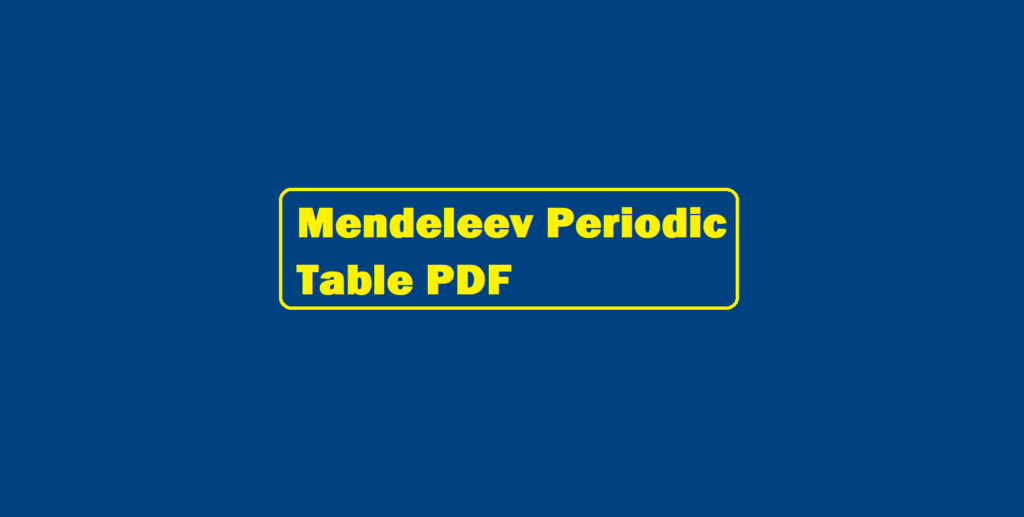Mendeleev Periodic Table PDF
Mendeleev’s Periodic Law
(i) Properties of elements are periodic functions of their atomic weights.
(ii) The elements are arranged in the increasing order of their atomic weights
(iii) Similarities in physical and chemical properties” appear at regular intervals
(iv) Mendeleev relied on the similarities in the empirical formulae and properties of the compounds formed by the elements.
Characteristics of Mendeleev’s Periodic table.
(i) Nine vertical columns called groups. These are designated as ), I, II, III, IV, V, VI, VII, and VIII. Except for groups 0 and VIII, each group is further divided into two sub-groups designated as A and B. Group VIII contains nine elements in three sets each containing three elements. However, group zero has no subgroups. It consists of only one vertical column of inert gases.
(ii) Six horizontal rows called series (Horizontal rows) or Periods. These are numbered from 1 to 6.
Significance of Mendeleev’s Periodic table.
(i) Systematic study of the elements.
(ii) Prediction of new elements. e.g. He predicted the properties of gallium (eka-aluminimum) and germanium (eka-silicon) which were unknown at that time.
(iii) Correction of doubtful atomic weights. e.g. beryllium was assigned an atomic weight of 13.5 and valency (wrongly calculated as 3). If beryllium has an atomic weight of 13.5, it should have been placed between carbon (atomic weight 12) and nitrogen (atomic weight 14). But no vacant place was available in between C and N furthermore properties of beryllium did not justify such a position. Therefore, valency 2 was assigned to beryllium which gave it an atomic weight of 4.5 × 2 = 9
Limitation in Mendeleev’s Periodic table.
(i) Anomalous position of hydrogen. Hydrogen is placed in group IA. However, it resembles the elements of both group IA (alkali metals) and group VII A (halogens).
(ii) Anomalous pairs of elements. some elements with higher atomic weights precede (are placed before) the elements with lower atomic weight. e.g. Ar (at. weight = 39.9) precedes potassium (at . weight = 39.1).
(iii) Position of isotopes have not been given different places in the periodic table.
(iv) Some dissimilar elements are grouped together while some similar elements are placed in different groups. e.g. alkali metals such as Li, Na, K etc. (group A) are grouped together with coinage metals such as Cu, Ag, and Au (group IB) though their properties are quite different.
(v) No proper place has been allotted to nine elements of group VIII.
Mendeleev Periodic Table PDF



